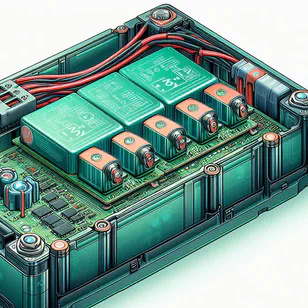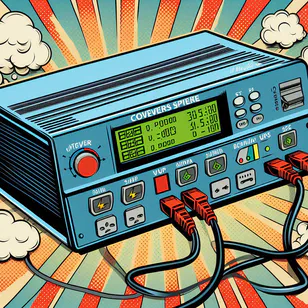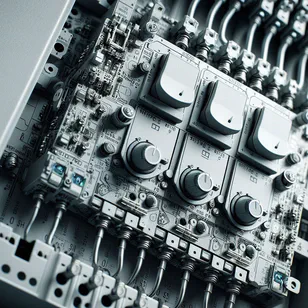Introduction
Lithium batteries, especially those marked “for UPS” (Uninterruptible Power Supply), have specific features that differentiate them from typical lead-acid batteries. Here’s what this marking means and how it affects the battery’s performance when used with a UPS.
Understanding Lithium Batteries for UPS
Lithium batteries, such as lithium iron phosphate (LiFePO4) ones, differ not only in chemistry but also in construction compared to lead-acid batteries. A typical 12-volt LiFePO4 battery consists of four cells, each with a voltage of 3.2 volts, and a Battery Management System (BMS) . The BMS is an integral part of the battery, connected between the negative terminal of the last cell and the negative terminal of the battery itself, where consumers like a UPS are connected. The BMS also has connections to the positive terminals of each cell and can interface with displays, buttons, or communication cables for advanced UPS or solar inverter integration .
The Role of BMS in UPS Systems
The primary function of the BMS is to protect the battery from various issues such as overcharge, over-discharge, overheating, cell imbalance, and polarity errors. For instance, when a UPS discharges the battery and shuts down, the BMS may activate its over-discharge protection, effectively “closing” the battery. This means that when the power returns, the UPS, which has a battery recognition function, may not charge the battery because it can’t “see” it due to the closed BMS.
This creates a potential issue: the BMS requires a voltage input to reopen, but the UPS can’t provide this voltage because it doesn’t detect the battery. This creates a catch-22 situation where the battery remains uncharged.
The Importance of a Bypass Circuit
To address this, battery manufacturers or assemblers often include a bypass circuit, consisting of a small electronic circuit with a diode and resistor, that allows the UPS to “see” the battery. This small bypass enables the UPS to send a charging voltage, which then reactivates the BMS, allowing normal operation to resume.
It’s important to note that some advanced UPS units have settings that can prevent this issue by shutting down half a volt before the BMS would close, thereby avoiding the problem altogether. If you’re using a solar charge controller in your system, it’s also worth ensuring that your charge controller has similar protective features.
What to Do If Your UPS Is Not Advanced
If your UPS is not advanced and your lithium battery is not adapted for UPS use, don’t worry—this is a minor issue. You can purchase a small charger for the required voltage to “jump-start” the battery in about 30 seconds. Alternatively, you can ask someone handy with a soldering iron to create a bypass, which is a quick and inexpensive solution.
However, it’s always best to buy a battery that is already adapted for use with a UPS. Interestingly, if you have multiple batteries connected in parallel, only one of them needs to be adapted for UPS compatibility.
Conclusion
The “For UPS” marking on a lithium battery indicates that it has been specially adapted to work seamlessly with uninterruptible power supplies, primarily through the inclusion of a bypass circuit to prevent issues with the BMS. If your battery doesn’t have this adaptation, simple solutions exist to ensure your system works efficiently. Nonetheless, opting for a pre-adapted battery can save you time and effort in the long run.




